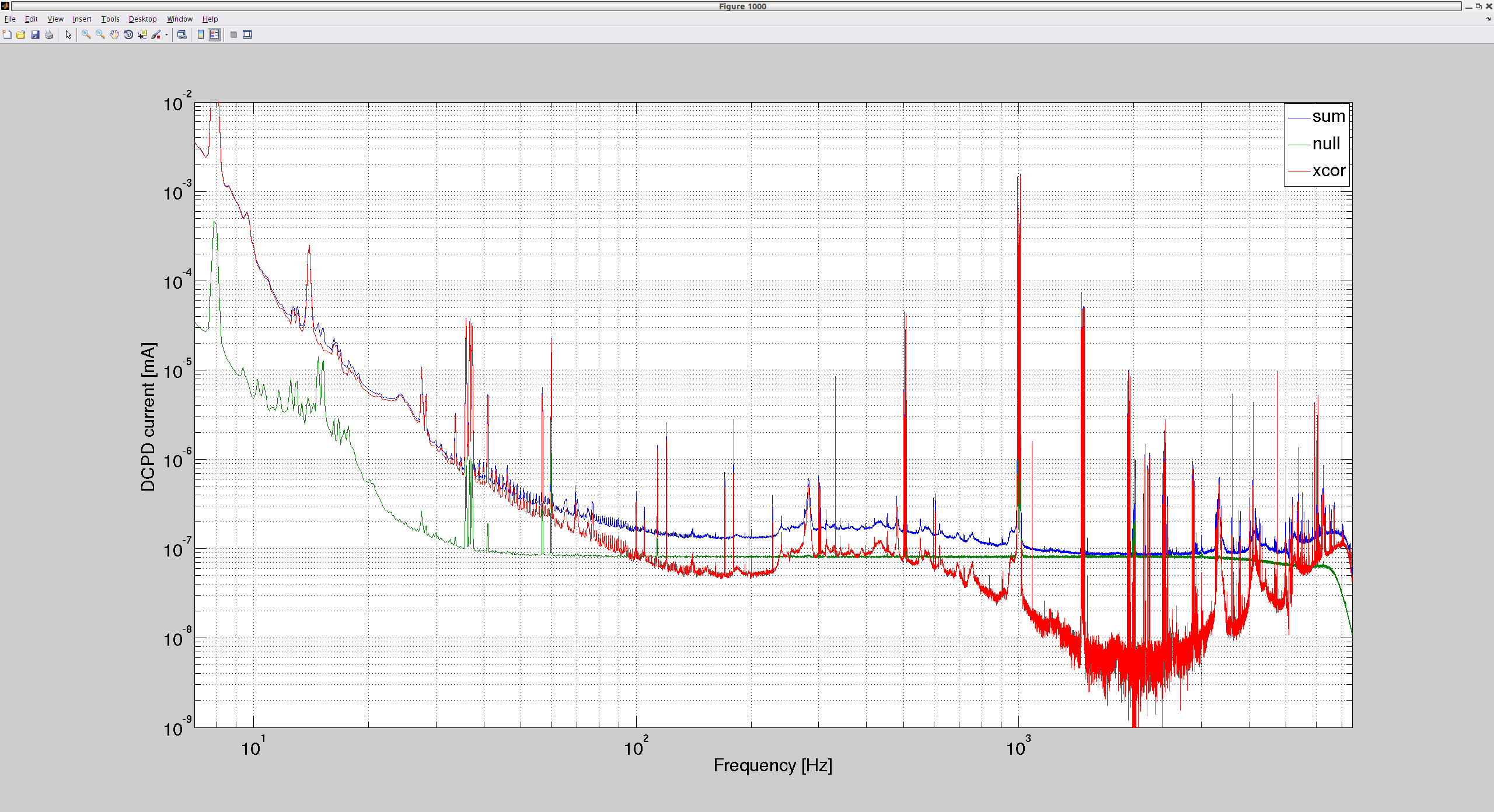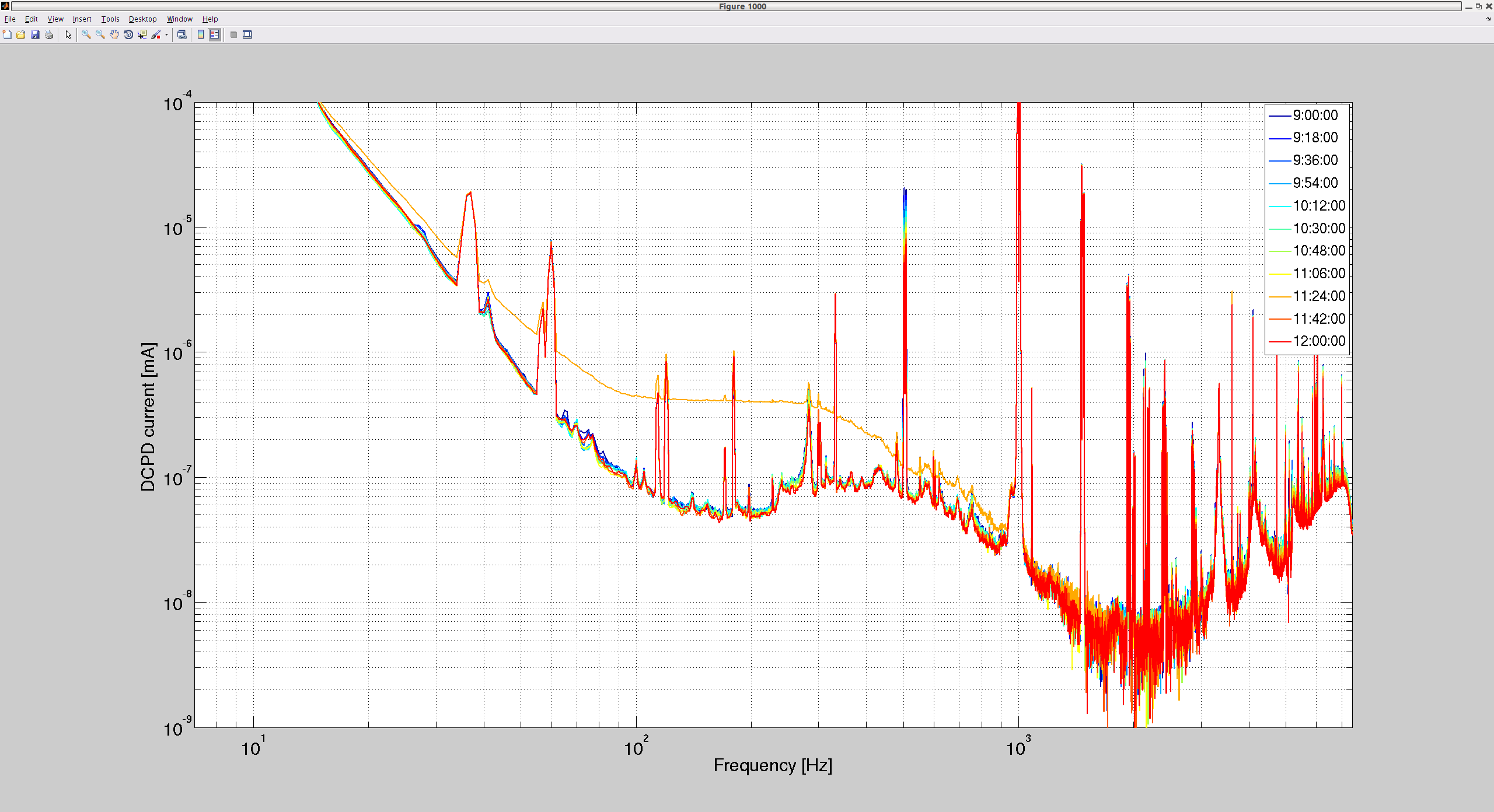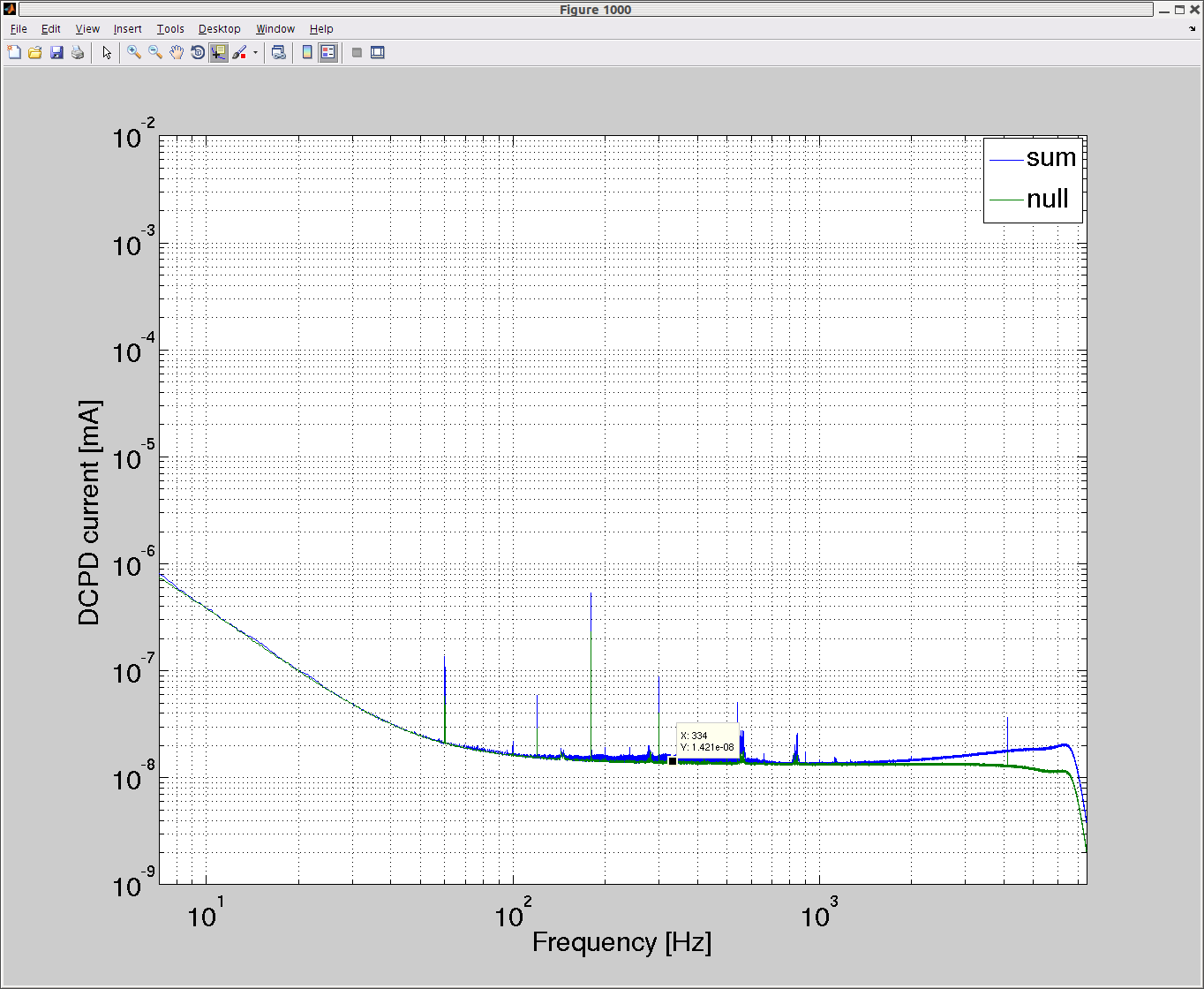In an attempt to bring some clarity into the beam jitter discussion I looked at the Gouy phase evolution of the input beam. I collected distance and focal length information from a variety of sources, notably T1200470 and E1200616.
The biggest uncertainty I had was the PSL persicope to HAM1 viewport distance - if someone knows that, let me know.
The MATLAB script with all the numbers is in ~controls/sballmer/20160930/inputBeamCalc.m. It creates a structure of the following form, fully describing the beam and optical mode:
IMC =
lambda: 1.0640e-06 % The wavelength in m
q: 0.2325 +13.3832i % The input Gaussian beam parameter q=z+izR in m
N: 4 % number of optics
dist: [16.2406 16.2406 0.2325 0.2325 0] % Distances between the optics (one more than N)
ifoc: [0.0731 0 0 0] % inverse focal length for all lenses and mirrors (f=R/2 for mirror)
label: {'MC2' 'MC3' 'Waist' 'MC1'} % optic names
The attached .mat file contains the following structures of that form::
IMP: Input beam: From PSL periscope to MC3
IMC: Input Mode Cleaner
IMCp: Input Mode Cleaner from MC1 to MC3 only (output path inside IMC)
IM: Input Mirros: from IMC to PRM
PRC: Power Recycling Cavity forward path
PRCr: Power Recycling Cavity return path
PRCrt:Power Recycling Cavity round trip
Below are plots and data for the different beam segments.
Input Mode Cleaner:
IMC =
lambda: 1.0640e-06
q: 0.2325 +13.3832i
N: 4
dist: [16.2406 16.2406 0.2325 0.2325 0]
ifoc: [0.0731 0 0 0]
label: {'MC2' 'MC3' 'Waist' 'MC1'}
Pin: 50
z= 00.0000 m, Gouy phase: 00.0000 deg after passing MC1; Spot size w=2.1293 mm
z= 16.2406 m, Gouy phase: 49.9133 deg after passing MC2; Spot size w=3.3764 mm
z= 32.4812 m, Gouy phase: 99.8267 deg after passing MC3; Spot size w=2.1293 mm
z= 32.7137 m, Gouy phase: 100.822 deg after passing Waist; Spot size w=2.129 mm
z= 32.9462 m, Gouy phase: 101.8172 deg after passing MC1; Spot size w=2.1293 mm
Round trip Gouy phase: 101.8172 deg
Gouy Phase from input coupler (MC1) to output coupler (MC3): 99.8267 deg
Input mirrors: From PSL periscope to MC3:
IM =
lambda: 1.0640e-06
q: -0.2325 +13.3832i
N: 6
dist: [0.2325 0.5507 1.0613 1.1703 1.2071 0.4130 0]
ifoc: [0 0 0.1562 -0.3199 0 0.0409]
label: {'Waist' 'IM1' 'IM2' 'IM3' 'IM4' 'PRMlens'}
z= 0.0000 m, Gouy phase: 0.0000 deg after passing MC3; Spot size w=2.1293 mm
z= 0.2325 m, Gouy phase: 0.99527 deg after passing Waist; Spot size w=2.129 mm
z= 0.78319 m, Gouy phase: 3.3516 deg after passing IM1; Spot size w=2.1308 mm
z= 1.8445 m, Gouy phase: 7.8634 deg after passing IM2; Spot size w=2.1444 mm
z= 3.0148 m, Gouy phase: 13.8099 deg after passing IM3; Spot size w=1.7841 mm
z= 4.2219 m, Gouy phase: 19.9983 deg after passing IM4; Spot size w=2.1257 mm
z= 4.6349 m, Gouy phase: 21.6763 deg after passing PRMlens; Spot size w=2.2471 mm
Input beam: From PSL periscope to MC3:
(The PSL periscope to input viewport distance is an educated guess.)
INP =
lambda: 1.0640e-06
q: -7.3931 +13.3832i
N: 6
dist: [0 2.7100 4.0180 0.2118 0.1400 0.2563 0.2895]
ifoc: [0 0 0 0 0 0]
label: {'PSLperiscope' 'INPUTViewPort' 'PeriscopeTop' 'PeriscopeBottom' 'Steer1' 'Steer2'}
z= 0 m, Gouy phase: 0 deg after passing PSLperiscope; Spot size w=2.4323 mm
z= 2.71 m, Gouy phase: 9.6308 deg after passing INPUTViewPort; Spot size w=2.2556 mm
z= 6.728 m, Gouy phase: 26.0719 deg after passing PeriscopeTop; Spot size w=2.1316 mm
z= 6.9398 m, Gouy phase: 26.9771 deg after passing PeriscopeBottom; Spot size w=2.1302 mm
z= 7.0798 m, Gouy phase: 27.5759 deg after passing Steer1; Spot size w=2.1296 mm
z= 7.3361 m, Gouy phase: 28.6729 deg after passing Steer2; Spot size w=2.129 mm
Power Recycling Cavity:
PRCrt =
lambda: 1.0640e-06
q: 7.1228 + 5.2551i
N: 8
dist: [16.6128 16.1551 24.8880 0 0 24.8880 16.1551 16.6128 0]
ifoc: [-0.4391 0.0556 -2.3189e-04 -0.0010 -2.3189e-04 0.0556 -0.4391 -0.1818]
label: {'PR2' 'PR3' 'ITMlens' 'ITMback' 'ITMlensr' 'PR3r' 'PR2r' 'PRM'}
z= 00.0000 m, Gouy phase: 00.0000 deg after passing PRM; Spot size w=2.2471 mm
z= 16.6128 m, Gouy phase: 23.9355 deg after passing PR2; Spot size w=6.1716 mm
z= 32.7679 m, Gouy phase: 24.8769 deg after passing PR3; Spot size w=53.9602 mm
z= 57.6559 m, Gouy phase: 25.0458 deg after passing ITMlens; Spot size w=52.9743 mm
z= 57.6559 m, Gouy phase: 25.0458 deg after passing ITMback; Spot size w=52.9743 mm
z= 57.6559 m, Gouy phase: 25.0458 deg after passing ITMlensr; Spot size w=52.9743 mm
z= 82.5438 m, Gouy phase: 25.2148 deg after passing PR3r; Spot size w=53.9602 mm
z= 98.6989 m, Gouy phase: 26.1562 deg after passing PR2r; Spot size w=6.1716 mm
z= 115.3117 m, Gouy phase: 50.0916 deg after passing PRM; Spot size w=2.2471 mm
Round trip Gouy phase: 50.0916 deg (one-way Gouy phae: 25.0458 deg)
I see you've used 2.71 [m] as your distance between the PSL periscope an the HAM1 viewport, and mentioned this was a big uncertainty. If I take the corner station Rack/Cable tray layout D1002704, which tells the distance between the HAM1 viewport and the +X edge of the PSL table is 86 [in], and add it to the distance from the edge of the table to the periscope mirrors from D0902114 -- 14 [in] -- I get an even 100 [in]. Thus, 2.54 [m] is likely a better number. I tag Systems just in case they have an even more accurate/precise number, but I think past the ~inch level precision, we'd need to measure it.
| T1000696-v2 | PSL table to HAM1 door flange | 88in |
| T1000696-v2 | HAM door depth | 18in |
| picture | top periscope mirror to edge of table | 14in |
| total | top periscope to input viewport | 84in, 2.134m |
T1000696-v2 has verified distances.
D1002704 is measuring PSL table North edge to HAM1 door flange, and states it's 86 inches.
D1102219-v1, Micheal Rodruck's document, aptly named H1_table_v1.pdf, has what I believe are measured values, though not in a form that's easy to use, but what I've looked at is consistant with T1000696-v2.
Using this combination of documents, the outer PSL wall to the input viewport is calculated to be 70 inches, something that could easily be measured.
































